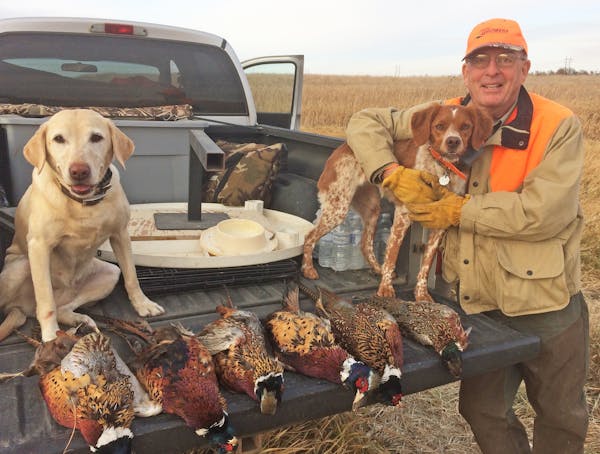Todd Roggenkamp's dad was a trapper.
That didn't necessarily mean the younger Roggenkamp was destined to become one, too. Some parents fish, but their kids just want to hunt. Others played hockey, though their kids are more interested in hoops. But Todd, who started trapping when he was 6 years old, wanted nothing more than to follow in his father's footsteps.
"My dad was a trapper for more than 60 years, and I learned it from him," said the 47-year-old Roggenkamp, who lives in Breezy Point and was elected president of the Minnesota Trappers Association (MTA) earlier this year. "I got my first traps as a Christmas present, and caught my first long-tailed weasel during Christmas break. My dad was trapping beavers on a couple of ponds and on the way in we cut weasel tracks. He helped me set up my traps and the rest, as they say, is history."
And yet, Roggenkamp remains as enthusiastic about the sport today as when he was a young man forced by his parents to put the trapping magazines on the shelf and call it a night.
"It's like Christmas morning every time you go out and check your traps," he said. "Each day is an adventure in its own way, and it's one of those lifelong pursuits where you never get to the point where you say, 'I've got it all figured out.' That never happens."
When the world fur market is strong and prices for furbearer pelts are high, as many as 10,000 people buy trapping licenses in Minnesota. When prices are low, about 5,500 people do so, according to the state Department of Natural Resources. While Roggenkamp pays attention to the prices his pelts will fetch, they don't drive him. At the same time, he's built a life around the hobby he loves. He has a degree in education from St. Cloud State and since 2011 has been deputy director of education for the Safari Club International Foundation. For eight years before that he was executive director of the Long Lake Conservation Center, which is an environmental learning center in Palisade, Minn. He's been involved with the MTA since 1993, when he started as its education coordinator.
"If I sat down and figured out the hours I have spent trapping, putting up fur and all that, and I considered it against today's minimum wage, I would be pretty poor," he said. "I'm not making any money at what I'm doing, that's for sure."
Rather, he's drawn by the opportunity to match wits with animals. To witness things in nature others might never get to see. And to spend time with his wife and daughters away from electronics and other distractions. In his daughters, in particular — they're 21, 18 and 16 years old — Roggenkamp notices how observant they are of the world around them.
"They understand the role we play in conservation and how we play a role in managing animal populations," he said. "We're stewards of the land. They all partake in eating the different things we've harvested over the years — deer and turkeys and ducks and pheasants. Even beavers. That also has given them the appreciation for the food piece — that it doesn't just come from the grocery store."
Roggenkamp traps pretty much the whole season — beginning in mid-October and running into the following May — for whatever species are available. He'll start the year on land, targeting animals such as coyotes, foxes and raccoons. Then he'll shift to water-based trapping for species such as beavers, muskrats and otters. He makes time to target bobcats, fisher and pine martens, too, and enjoys trapping weasels with his daughters — a throwback to his early days of running a trapline.
He sells the pelts of the animals he traps and has at least tried eating most of them as well. He relishes the chance to try to outsmart his quarry, and says the only way that's possible is to be in tune with the land.
"You try to outsmart them and understand why they do what they do," Roggenkamp said. "We claim to be the smartest mammals on earth and we claim to be on the top of the food chain. Yet over the years I've seen animals that survive just off their base instincts. They make a fool out of me more often than not. Getting close to the land is the only way you can outsmart them. You feel a closeness to that animal you are going after."
As MTA president, he plans to continue the organization's focus on trapping education. A few weeks ago, for example, he spent a day in St. Cloud talking to 300 sixth-grade students about trapping. The goal, he says, wasn't to make them trappers, but to give them an understanding of what it's all about. The larger objective is to ensure future trappers have the same opportunities as today's trappers.
"It isn't just about the trapping. It's the sunrises and the sunsets. It's the other animals you see when you're out there. The other day I saw a big buck mink. I wasn't pursuing him, so I just watched him. How would I have seen that if I wasn't out there?" Roggenkamp said. "There's a lot of wilderness in our world, even though we've tried to tame it. You can't beat being out there when the snow is coming down softly, and that's the kind of thing you're not going to find in a computer or even a book."
